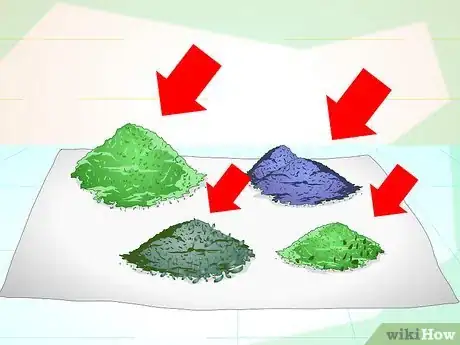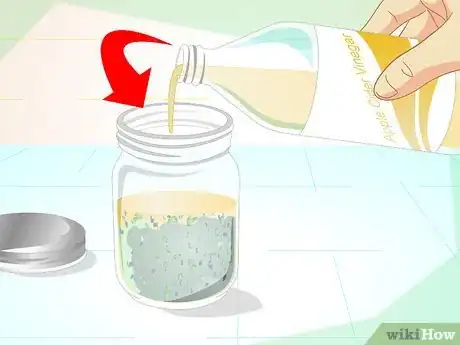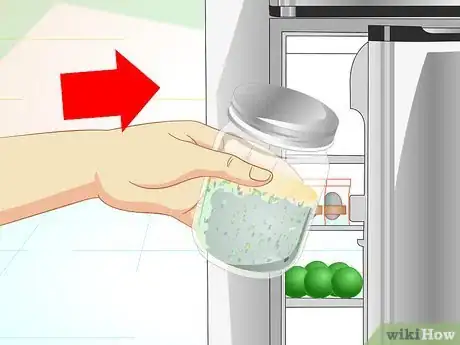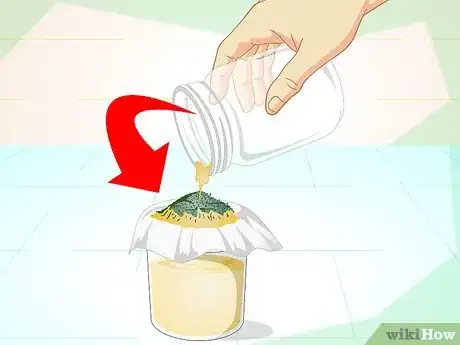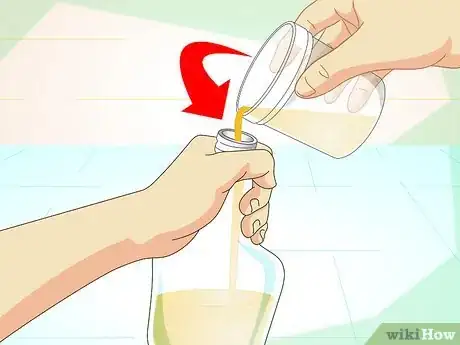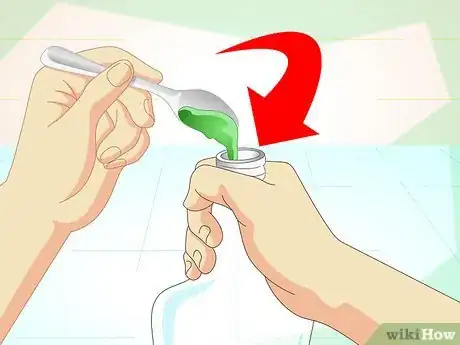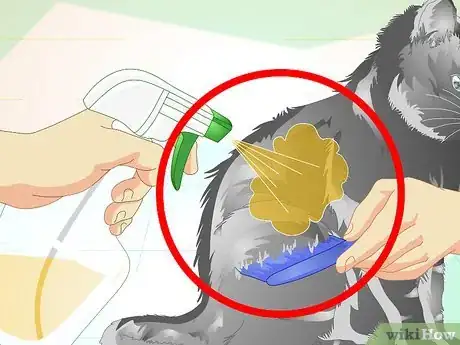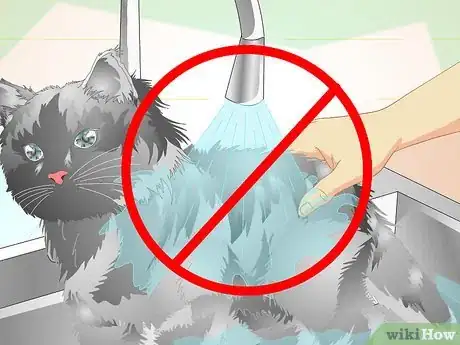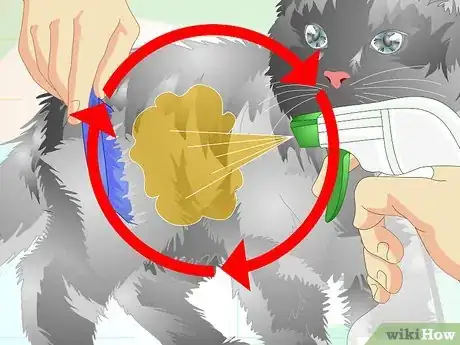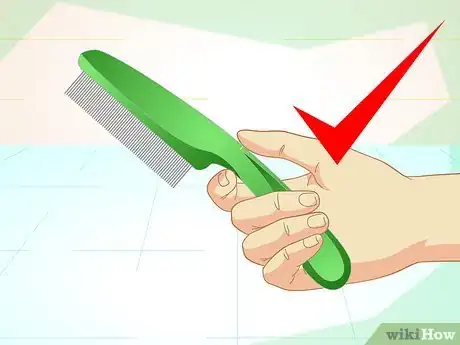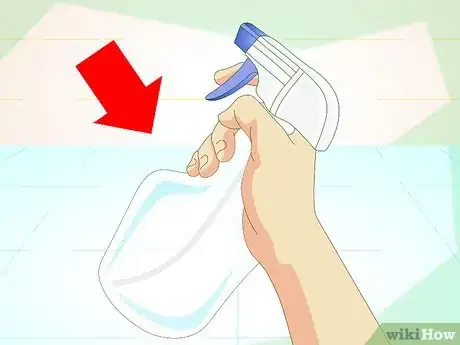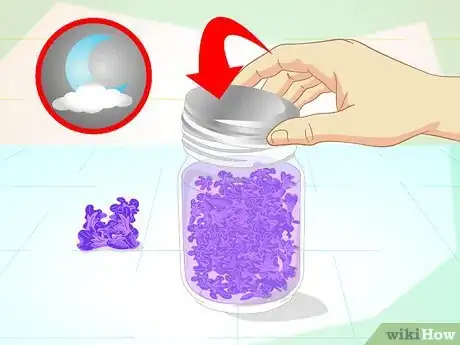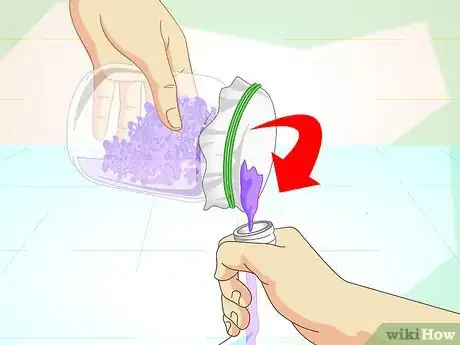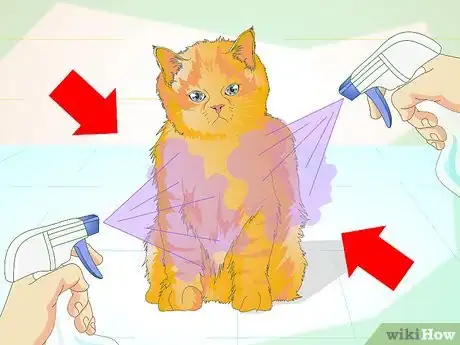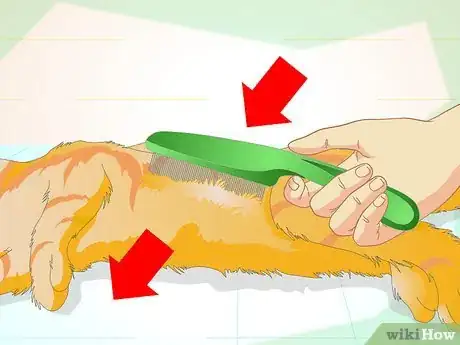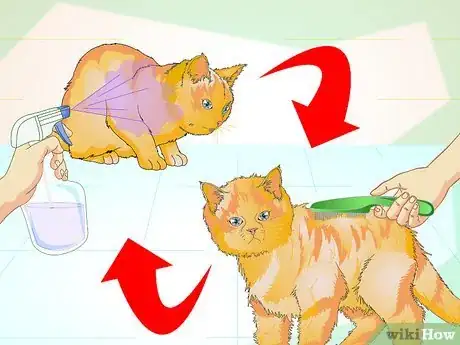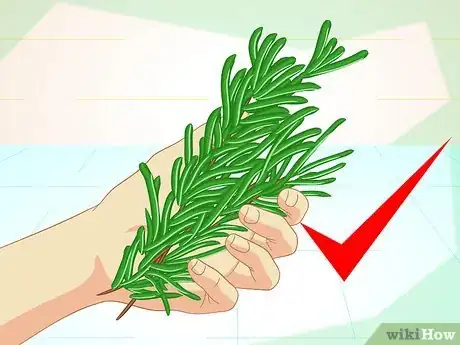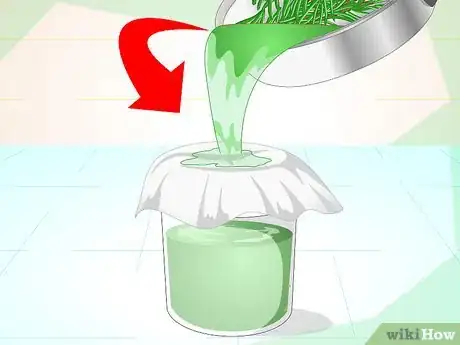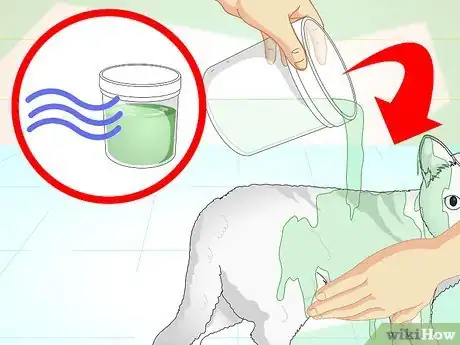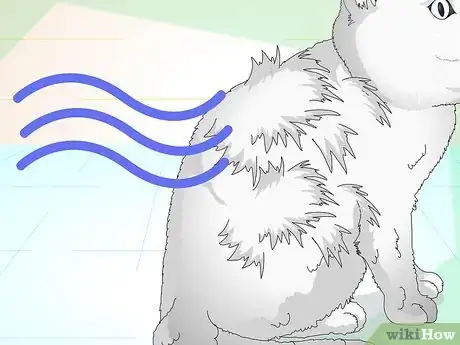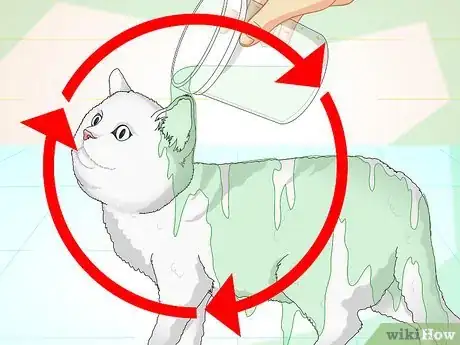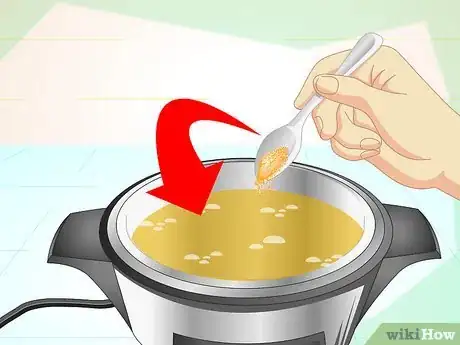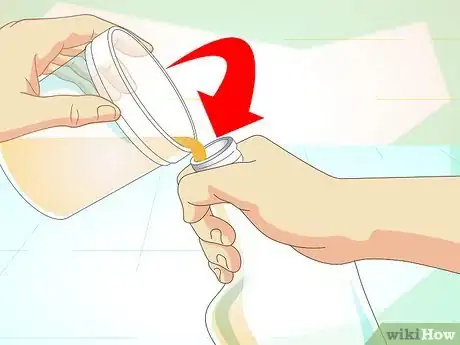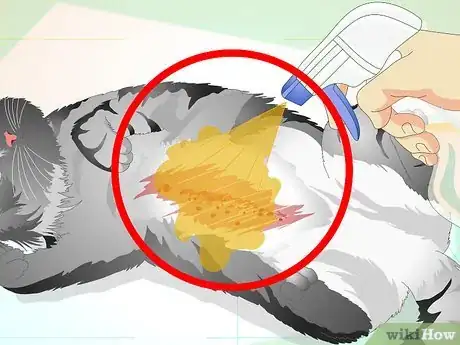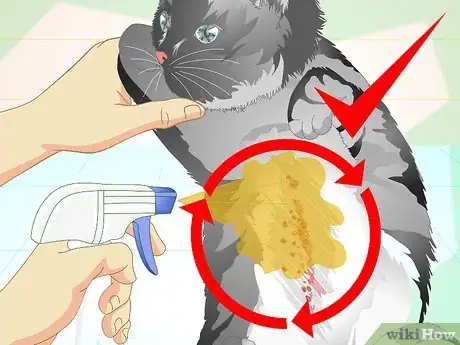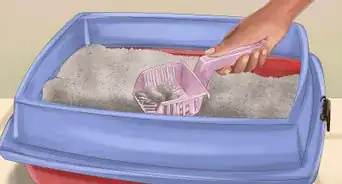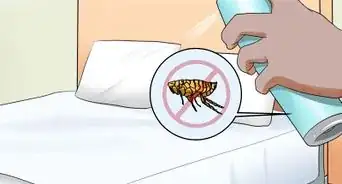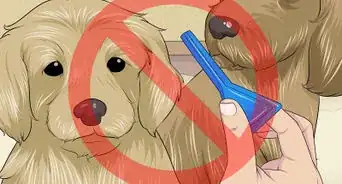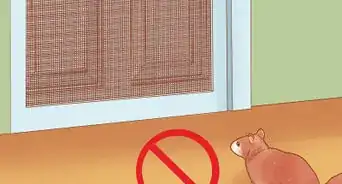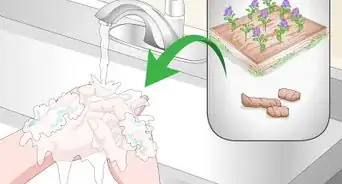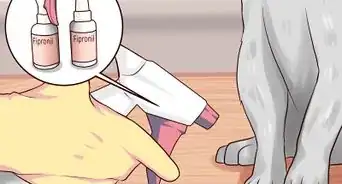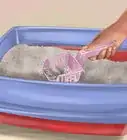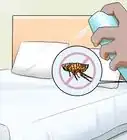wikiHow is a “wiki,” similar to Wikipedia, which means that many of our articles are co-written by multiple authors. To create this article, 19 people, some anonymous, worked to edit and improve it over time.
There are 13 references cited in this article, which can be found at the bottom of the page.
wikiHow marks an article as reader-approved once it receives enough positive feedback. In this case, 90% of readers who voted found the article helpful, earning it our reader-approved status.
This article has been viewed 177,321 times.
Learn more...
While there are many topical treatments and monthly medications available to kill fleas, you have to be careful since not all of these products are safe for your cat or your family. Fortunately, you can use homemade herbal remedies to help keep your cat flea free. These options contain fresh and dried herbs such as lavender, chamomile, rosemary, and neem leaf, which will resolve your flea problem and keep your kitty friend healthy.
Ingredients
- 2 cups unfiltered apple cider vinegar
- 1 tablespoon dried organic neem leaf
- 1 tablespoon dried organic catnip
- 1 tablespoon dried organic lavender
- 1 tablespoon dried organic peppermint leaf
- 1 tablespoon pure aloe vera gel (optional but helps with skin and hair health)
- 1 cup water
- Fresh lavender
- 1 cup water for soaking
- Fresh Rosemary
- 3 cups water
- Chamomile Tea Bags or Looseleaf Tea
- 1 cup water
Steps
Mixing a Cat-Friendly Herbal Flea Spray
-
1Find and purchase the dried herbs. These dried herbs may be difficult to locate in a grocery store, but should be available in most health-food stores or may be purchased online.[1]
- Since cats can be very sensitive to certain chemicals, it’s a good idea to purchase dried herbs that are organic so you can be confident they have not been treated with pesticides that may harm your cat.
- Do not use neem oil, lavender oil, or peppermint oil as a substitute for the dried herbs because these could be toxic to your cat. As long as they are not in essential oil form, these herbs are safe to apply to your cat even if it ingests the mixture while licking its hair or skin.
-
2Mix the apple cider vinegar and herbs together. In a mason jar or other container with a secure lid, mix the apple cider vinegar and herbs.[2] [3]
- Vinegar kills fleas, and the herbs also repel fleas while offering skin-soothing benefits to your cat.
- If you are unable to locate these herbs or are looking for a faster solution to your cat’s flea problem, you can add 2 cups of white vinegar to your cat’s bath or comb the vinegar through their fur.[4]
Advertisement -
3Steep the mixture for 1 to 2 weeks in the fridge. Store the mason jar in your fridge, and allow the mixture to steep for 1 to 2 weeks to increase the effectiveness of the spray. Shake the mixture on a daily basis because the herbs can settle.[5]
-
4Strain the mixture. Using cheesecloth or a fine strainer, separate the dried herbs from the vinegar, which has been fully infused. [6]
- You can discard the dried herbs at this point.
- Cheesecloth, a gauze-like cotton cloth, can usually be purchased at grocery stores or hardware stores.
-
5Pour the mixture into an 8 ounce spray bottle. After you’ve allowed the mixture to steep for the appropriate time, pour it into a clean spray bottle.[7]
- If you are repurposing an old spray bottle or if it had a different mixture in it previously, it’s important to carefully clean the bottle to make sure there are no chemicals in it that might hurt your cat.
- A funnel can be a useful tool to fill the spray bottle without spilling any of the solution.
-
6Add the aloe vera gel and water. Now that the vinegar-herb mixture is in the spray bottle, add in the appropriate amount of aloe gel and mix in enough distilled water to fill the 8 ounce spray bottle.[8]
- The aloe vera is optional, but it will help soothe your cat’s irritated skin.
-
7Apply the flea remedy to your cats. Spray the flea remedy on your cat’s body, avoiding the eyes and nose.[9]
- You might find it easier to do this while grooming your cat with a flea comb or brush. This will ensure that the spray is applied evenly to all areas, and you’ll probably get rid of some fleas right away. To dispose of fleas with the comb, dip it into a container of water with a little dish soap.[10]
-
8Do not rinse the mixture off. Allowing the solution to dry on your cat will give the spray more time to eliminate fleas while soothing your cat’s skin.[11]
-
9Reapply daily. Reapply the herbal remedy to your cat daily to increase its effectiveness against fleas.[12]
Mixing a Lavender Water Spray
-
1Purchase a flea comb. These are usually sold at your local pet store. You can also use a lice comb if you already have one on hand.
-
2Find fresh lavender. Lavender is a natural flea repellent, and has a very pleasant scent. While it can sometimes be difficult to locate fresh lavender, you can try local stores that sell herbs.[13]
- You can also grow your own lavender by either buying seeds or the plant itself any place that has a garden area.
-
3Get a squirt bottle. You can use an empty squirt bottle you have at home, but try to avoid any bottle that had harsh chemicals in it. Make sure you clean the bottle thoroughly to prevent your cat from having any skin reactions to chemicals left in the bottle.
-
4Soak the lavender overnight. Grab a large handful of your fresh lavender and put it in a clean container. Fill it with water and let it sit overnight.[14]
- A mason jar with a secure lid works well.
-
5Strain and put lavender water into your clean squirt bottle. Use a small screen or tea strainer to separate the lavender from the water you let sit overnight.[15]
- A funnel can make it easier to pour the lavender water into the clean spray bottle.
-
6Spray your cat with lavender water all over their body. Saturate your cat with the lavender mixture.[16]
- Your cat might not like the spraying noise or the feeling of being wet, so it can be helpful to have someone hold the cat still and prevent it from running away or clawing you.
- Avoid the eye, mouth, and nose area so the lavender water does not sting these sensitive places.
-
7Comb your cat with the flea comb. Make sure to run the comb from head to tail and concentrate on the nape of the neck, face, armpits, under the chin, and belly. These are places where fleas are often hiding.[17]
-
8Apply your lavender spray as needed and comb your cat often. It's good to spray your cat and comb them with the flea comb once a day.[18]
Treating Your Cat With Rosemary Water
-
1Find and purchase the rosemary. Look for fresh rosemary in a grocery store or health-food store.
- Buying organic rosemary will help ensure there are no pesticides or chemicals on it that may harm your cat.
- Make sure not to purchase rosemary pea or rosemary bog, because these plants are toxic to cats.
- If you have rosemary in your garden or backyard, feel free to use it.
-
2Boil the rosemary in the water for 30 minutes. Add the fresh rosemary to the water and boil the mixture for 30 minutes.
- You can pull off the rosemary leaves from the branch or just leave them on. The leaves may start to separate from the stalk once the boiling occurs, but that’s not a problem since you are just infusing the water with the rosemary.
-
3Strain the mixture. Use a strainer or cheesecloth to separate the rosemary from the water.
- You can discard the rosemary after separating it from the infused water.
-
4Let the mixture cool. After the mixture cools, pour it over your cat’s body, so your pet is soaked with the rosemary water.
- Avoid the eyes and nose because the rosemary water might sting these sensitive areas.
-
5Let your cat's fur air dry. Don’t worry about rinsing the solution off your cat because you want to give the mixture time to work on the fleas and calm irritated skin.
-
6Apply as needed. You can repeat the rosemary-water treatment as needed to repel fleas and soothe your cat’s skin.
Soothing Flea Bites and Irritated Skin with Chamomile Tea
-
1Purchase chamomile tea. You probably know that chamomile tea is often recommended for upset stomachs and sleeplessness in humans, but it can also help soothe your cat’s irritated skin. If you don’t already have chamomile tea in your pantry, go to the grocery store or a health food store and buy some.[19]
- Look for a product that does not have additional herbs in it, because these ingredients may not help relieve the itchiness or irritation that results from flea bites.
- Both tea bags and looseleaf chamomile tea will work, so pick whichever option you prefer. While tea bags are more convenient, looseleaf tea is often stronger, which will make it more effective at relieving your cat’s itching. The leaves of looseleaf tea can also sometimes be used more than once. Keep in mind that if you go with looseleaf tea, you’ll need brewing equipment such as an infuser or brew basket.[20]
-
2Make the tea. There are no set guidelines for the type of equipment you should use to brew the tea or the length of time you should let it steep, but steep the tea long enough to make a strong solution.[21]
- Don’t be afraid to let the tea steep for 15 to 30 minutes. You won’t be applying the hot tea to your cat, so it’s not a problem if it gets lukewarm.
- If you are using smaller size tea bags, you may need to use several to make the tea more potent.
-
3Chill the tea in the fridge. After you’ve brewed the tea, chill it in the fridge until it is no longer warm.[22]
- It won't be a problem to let it sit in the fridge overnight.
- If you are trying to make the mixture quickly, you can place the brewed tea in the freezer for a couple minutes to cool it down fast.
-
4Pour the tea into a spray bottle. After chilling the tea, you can now pour it into a spray bottle, which will make it easy to apply to your cat.[23]
- Use a new spray bottle or thoroughly clean an existing one so that you know it does not contain any ingredients or substances that might be toxic to your cat.
- Since the mouth on many spray bottles is narrow, a small funnel can make this process less messy and ensure as much of the tea as possible actually makes it into the spray bottle.
- If you have extra tea that won’t fit in the spray bottle, store it in a container in the fridge so you’ll be able to have the next batch ready when it’s time to reload the bottle.
-
5Spray it on your cat’s irritated skin. Flea bites often cause itchy, red, and raw skin, so thoroughly coat these areas on your cat. The tea will soothe the skin, and you will notice that your cat is no longer licking, scratching, or biting the affected area.[24]
- Chamomile also acts as a disinfectant, and will kill yeast and bacteria that might irritate your cat’s skin.
- There’s no need to rinse the tea off your cat. It will work better if it has time to sit on the skin.
-
6Reapply as needed. Since the tea mixture won’t hurt your cat, you can reapply the spray as often as necessary.
- If your cat’s ears also seem irritated from flea bites or other skin issues, you can add a splash of distilled white vinegar to the chamomile tea and use this to clean your pet’s ears.
Community Q&A
-
QuestionI just love these natural remedies, and would love to use them, but there is absolutely no way my cats will allow themselves to be sprayed. Any ideas how else to apply these herbs?
 MarshaCommunity AnswerYou could spray the natural remedy onto your hands (wear disposable gloves) or a cloth towel and rub your hands or towel on your cat.
MarshaCommunity AnswerYou could spray the natural remedy onto your hands (wear disposable gloves) or a cloth towel and rub your hands or towel on your cat. -
QuestionIs this safe for kittens?
 Community AnswerYes.
Community AnswerYes.
Warnings
- Do not use essential oils to make herbal flea remedies for cats. While these may be safe to use on dogs, cats cannot metabolize these oils easily. Using essential oils on your cat can cause rashes and in extreme cases may cause liver damage, which can result in death.[27] [28]⧼thumbs_response⧽
- Do not use an herbal flea remedy with garlic. Avoid herbal flea remedies that include garlic as an ingredient, because garlic is toxic to cats.[29]⧼thumbs_response⧽
References
- ↑ http://www.thehippyhomemaker.com/diy-flea-tick-spray-cats/
- ↑ http://www.care2.com/greenliving/aromatherapy-for-cats.html
- ↑ http://www.thehippyhomemaker.com/diy-flea-tick-spray-cats/
- ↑ http://www.maine-coon-cat-nation.com/vinegar-kills-fleas.html
- ↑ http://www.thehippyhomemaker.com/diy-flea-tick-spray-cats/
- ↑ http://www.thehippyhomemaker.com/diy-flea-tick-spray-cats/
- ↑ http://www.thehippyhomemaker.com/diy-flea-tick-spray-cats/
- ↑ http://www.thehippyhomemaker.com/diy-flea-tick-spray-cats/
- ↑ http://www.thehippyhomemaker.com/diy-flea-tick-spray-cats/
- ↑ http://mom.me/pets/cats/19846-methods-natural-flea-control-cats/item/flea-control-cats2/
- ↑ http://www.thehippyhomemaker.com/diy-flea-tick-spray-cats/
- ↑ http://www.thehippyhomemaker.com/diy-flea-tick-spray-cats/
- ↑ http://www.homeremedyshop.com/effective-home-remedies-for-fleas/
- ↑ http://www.homeremedyshop.com/effective-home-remedies-for-fleas/
- ↑ http://www.homeremedyshop.com/effective-home-remedies-for-fleas/
- ↑ http://www.homeremedyshop.com/effective-home-remedies-for-fleas/
- ↑ http://www.thebugsquad.com/fleas/flea-comb-guide/
- ↑ http://www.homeremedyshop.com/effective-home-remedies-for-fleas/
- ↑ http://www.homeremediesweb.com/chamomile_health_benefits.php
- ↑ http://www.teatulia.com/tea-101/loose-vs-tea-bag.htm
- ↑ http://www.treehugger.com/green-home/21-natural-home-remedies-pets.html
- ↑ http://www.petmd.com/blogs/dailyvet/2009/August/28-4606
- ↑ http://www.petmd.com/blogs/dailyvet/2009/August/28-4606
- ↑ http://www.petmd.com/blogs/dailyvet/2009/August/28-4606
- ↑ http://www.catster.com/lifestyle/9-methods-natural-flea-control-cats
- ↑ http://mom.me/pets/cats/19846-methods-natural-flea-control-cats/item/flea-control-cats2/
- ↑ http://roberttisserand.com/2011/06/cats-essential-oil-safety/
- ↑ http://www.sustainablebabysteps.com/home-remedies-for-fleas.html
- ↑ http://www.catster.com/lifestyle/9-methods-natural-flea-control-cats
About This Article
To make an herbal flea remedy for cats, start by boiling some fresh rosemary for 30 minutes. Then, strain the water into a separate container, and let it cool before pouring it over your cat's body. You can also make an herbal flea remedy by soaking fresh lavender in a jar of water overnight. Then, strain the water into a spray bottle, and spray your cat's fur with it before brushing it with a flea comb. Never use essential oils, like neem oil or lavender oil, to treat fleas on your cats since they can be toxic. To learn how to make an herbal flea spray using apple cider vinegar, read on!
